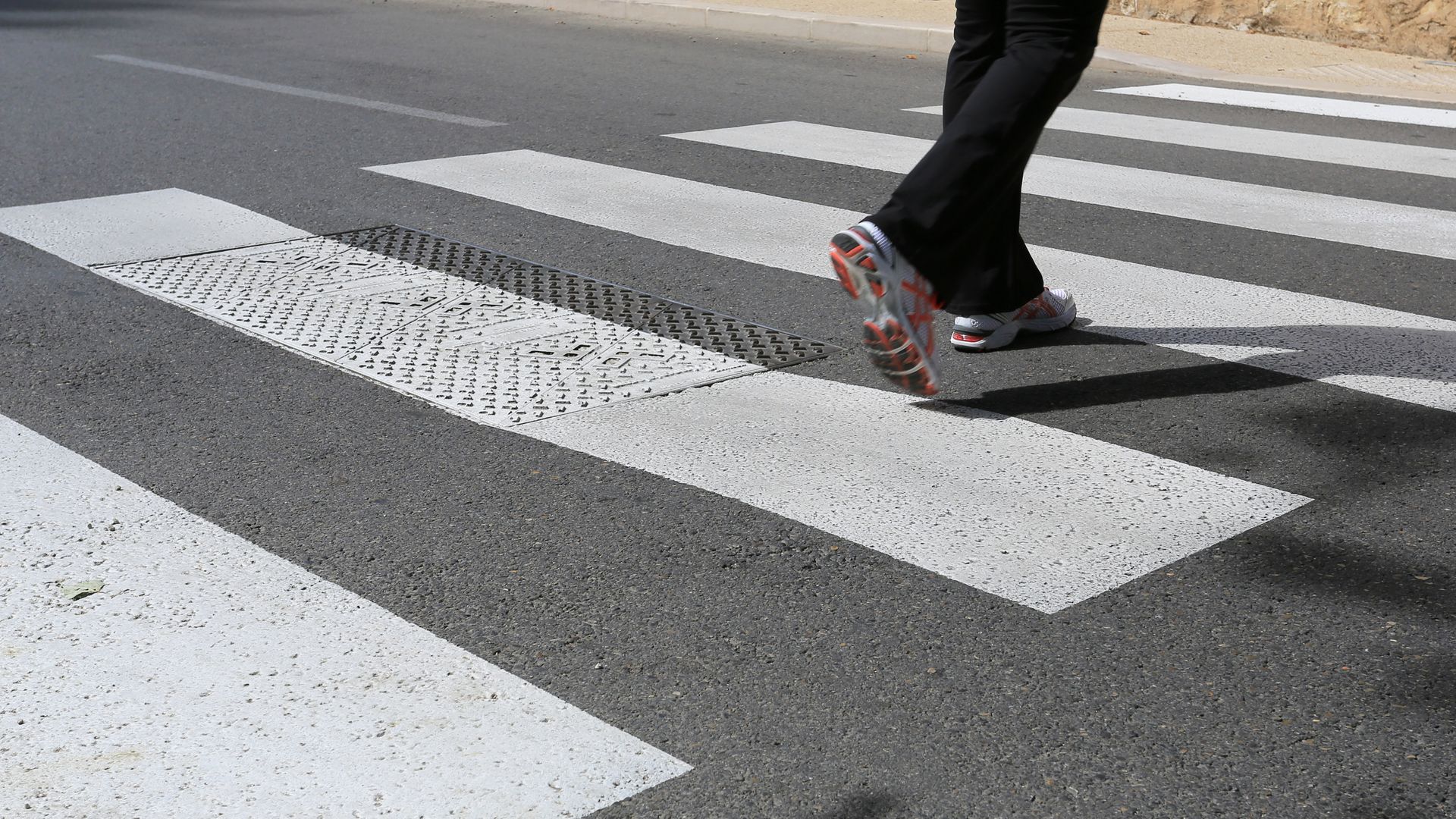Immediate Actions You Should Take When a Pedestrian Is Hit by a Car
On behalf of Harper, Evans, Hilbrenner & Netemeyer
A Comprehensive Guide to Handling Pedestrian Accidents

Pedestrian accidents are an alarmingly common and serious issue in urban and suburban areas. Statistics reveal a distressing trend: the number of pedestrians injured or killed in traffic incidents is on the rise. This highlights the need for awareness and knowledge about the steps to take if such an unfortunate event occurs.
Understanding the immediate actions to take following a pedestrian accident is crucial. Not only does it involve ensuring the safety and health of the injured party, but it also involves legal and procedural steps that could significantly impact the outcome of any subsequent claims or legal actions. Knowledge of these steps is essential for anyone who walks near roadways, providing a foundation for handling these critical moments effectively and confidently.
Immediate Steps to Take at the Scene
Step 1: Ensure Safety and Call 911
Importance of Reporting the Accident
Immediately after a pedestrian accident, it's crucial to assess the situation and call 911. This step is vital as it ensures that medical professionals are dispatched to the scene to provide necessary medical care. Even if injuries seem minor, some may not be immediately apparent and could have long-term consequences if not promptly treated.
Seeking Immediate Medical Attention
Medical attention is not only crucial for health reasons but also plays a significant role in any legal claims that may follow. Medical records serve as a vital piece of evidence in documenting the extent and nature of the injuries sustained, which is essential when seeking compensation.
Step 2: Gather Essential Information
Collecting Driver's Details and Insurance Information
After ensuring medical assistance is on the way, the next step is to gather crucial information from the driver involved. This includes the driver's name, contact information, insurance details, and vehicle registration number. This information will be essential for filing insurance claims and for any legal proceedings.
Documenting the Scene with Photographs
Photographic evidence can be a powerful tool in reconstructing the events leading up to and following the accident. Photographs should include shots of the vehicle, the accident scene, any visible injuries, and environmental factors that may have contributed to the accident, like obscured traffic signals or lack of proper signage.
Step 3: Communicate Carefully
Avoiding Self-Incriminating Statements
It's important to be mindful of the conversation with the driver and any witnesses. Avoid making statements that could be interpreted as admitting fault, such as apologizing for the incident. These statements could be used against you in legal proceedings.
Dealing with the Driver and Their Representatives
If the driver or their representatives (such as insurance agents or lawyers) attempt to discuss the accident, it's advisable to limit communication until you have legal representation. Direct all correspondence to your lawyer to avoid being manipulated into accepting a lower settlement or inadvertently admitting fault.
Legal Rights and Responsibilities
Understanding Negligence and Liability in Pedestrian Accidents
Negligence and liability are central concepts in pedestrian accidents. A driver may be considered negligent if they failed to exercise reasonable care, leading to the accident. This could include speeding, distracted driving, or not yielding to pedestrians at crosswalks. Establishing negligence is crucial for a pedestrian to receive compensation.
In some cases, liability may not solely rest with the driver. For instance, the city might be liable for poor road conditions or inadequate signage. Pedestrians themselves can also be partially liable, for example, if they were jaywalking or crossing against a traffic signal.
Role of Insurance in Pedestrian Accidents
In pedestrian accidents, insurance plays a pivotal role. The driver's insurance typically covers damages if they are found at fault. This includes medical expenses, lost wages, and pain and suffering for the pedestrian. However, insurance companies may attempt to minimize payouts, making it essential for pedestrians to understand their coverage and rights. In cases where the driver is uninsured or underinsured, the pedestrian's own insurance (like health or uninsured motorist coverage) might provide compensation.
The Concept of Comparative Negligence
Comparative negligence is a legal doctrine applied in many states, which allows a damaged party to recover even if they are partially at fault. The percentage of their fault reduces the compensation. For example, if a pedestrian is found 20% at fault for an accident, they can still recover 80% of the damages from the other party. Understanding this concept is vital for pedestrians in accidents where blame may be shared.
Seeking Medical Attention and Documenting Injuries
Importance of a Full Medical Examination
A thorough medical examination immediately after an accident is essential, even if no injuries are apparent. Some injuries, like internal bleeding or concussions, may not show immediate symptoms. Early diagnosis can significantly impact recovery and provide a medical record of the injuries, which is crucial for legal claims.
Documenting Injuries for Legal Purposes
Documenting injuries is critical when seeking compensation. This involves keeping detailed records of medical visits, treatments, and diagnoses. Photographs of injuries and a diary noting pain levels and how injuries impact daily life can strengthen a compensation claim.
Understanding Common Pedestrian Injuries
Common injuries in pedestrian accidents include fractures, head injuries, spinal injuries, and lacerations. Head injuries, including traumatic brain injuries, can be severe, sometimes leading to long-term cognitive issues. Understanding these common injuries can help pedestrians comprehend the potential severity of their situation and the importance of thorough medical evaluation and documentation.
Navigating Insurance Claims
Filing a Claim Against the Driver's Insurance
After a pedestrian accident, the first step in the insurance process is to file a claim against the driver's insurance. This claim should include all relevant details of the accident, including the time, location, and nature of the incident, as well as any injuries sustained. It is crucial to file this claim promptly, as insurance companies often have strict deadlines for reporting accidents.
Handling Insurance Adjusters
Dealing with insurance adjusters can be challenging. These professionals represent the insurance company's interests and may attempt to minimize the payout. It's important to provide accurate and detailed information about the accident and injuries but refrain from making any statements that could be interpreted as admitting fault. Keep all conversations factual and avoid speculating about the accident or injuries.
Potential Challenges in the Insurance Process
Navigating insurance claims often involves challenges such as delays in processing, disputes over the fault or extent of injuries, and inadequate settlement offers. In some cases, insurance companies may deny claims altogether. It's essential to be prepared for these potential hurdles by keeping thorough records of all communications and documentation related to the accident and injuries.
Legal Actions and Consulting a Lawyer
When to Consult a Pedestrian Accident Lawyer
Consulting with a lawyer is advisable if there are disputes over fault or significant injuries or if the insurance company denies the claim or offers an unsatisfactory settlement. An experienced pedestrian accident lawyer can provide valuable guidance, represent your interests, and negotiate with insurance companies on your behalf.
Filing a Lawsuit: Timelines and Procedures
If insurance negotiations are unsuccessful, filing a lawsuit might be the next step. This must be done within the statute of limitations, which varies by state but typically ranges from one to three years from the date of the accident. The lawsuit involves filing a complaint, discovery, and possibly a trial, where a judge or jury will determine fault and damages.
Understanding Settlement and Compensation
Settlements in pedestrian accident cases may include compensation for medical bills, lost wages, and pain and suffering. The amount depends on factors like the severity of injuries, impact on quality of life, and the clarity of fault. A lawyer can help estimate the value of a claim and negotiate for a fair settlement.
Empowering Pedestrians in the Wake of an Accident
Navigating the aftermath of a pedestrian accident can be complex and challenging. Each phase requires informed decisions and actions, from taking immediate steps at the accident scene to understanding legal rights and navigating insurance claims. Consulting with a lawyer becomes essential, especially when dealing with significant injuries, disputes over fault, or inadequate insurance offers. The key to managing these situations lies in being proactive, knowledgeable, and seeking professional guidance when necessary. Remember, the priority is always the health and safety of the injured pedestrian, followed by securing the compensation they rightfully deserve.

